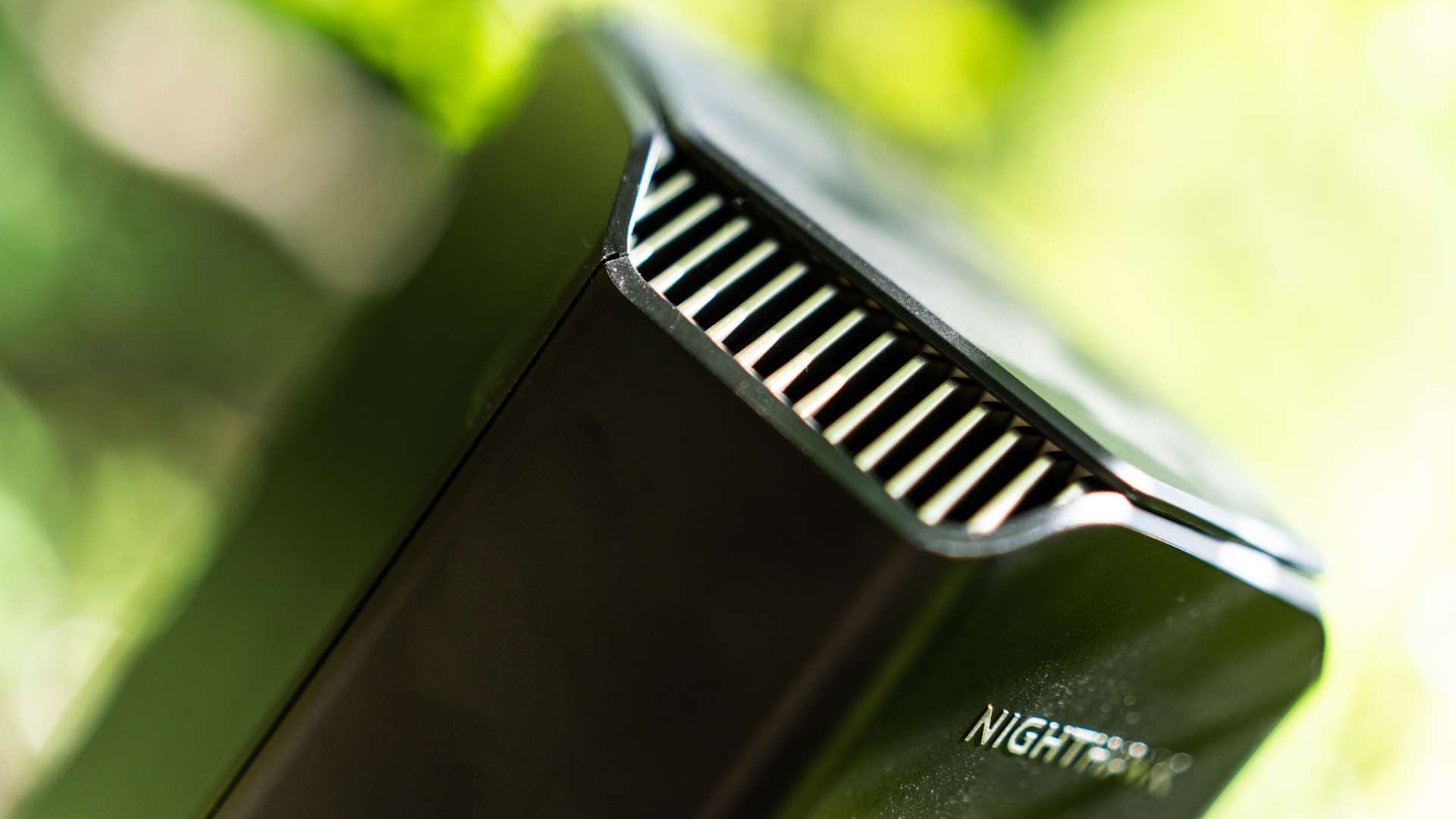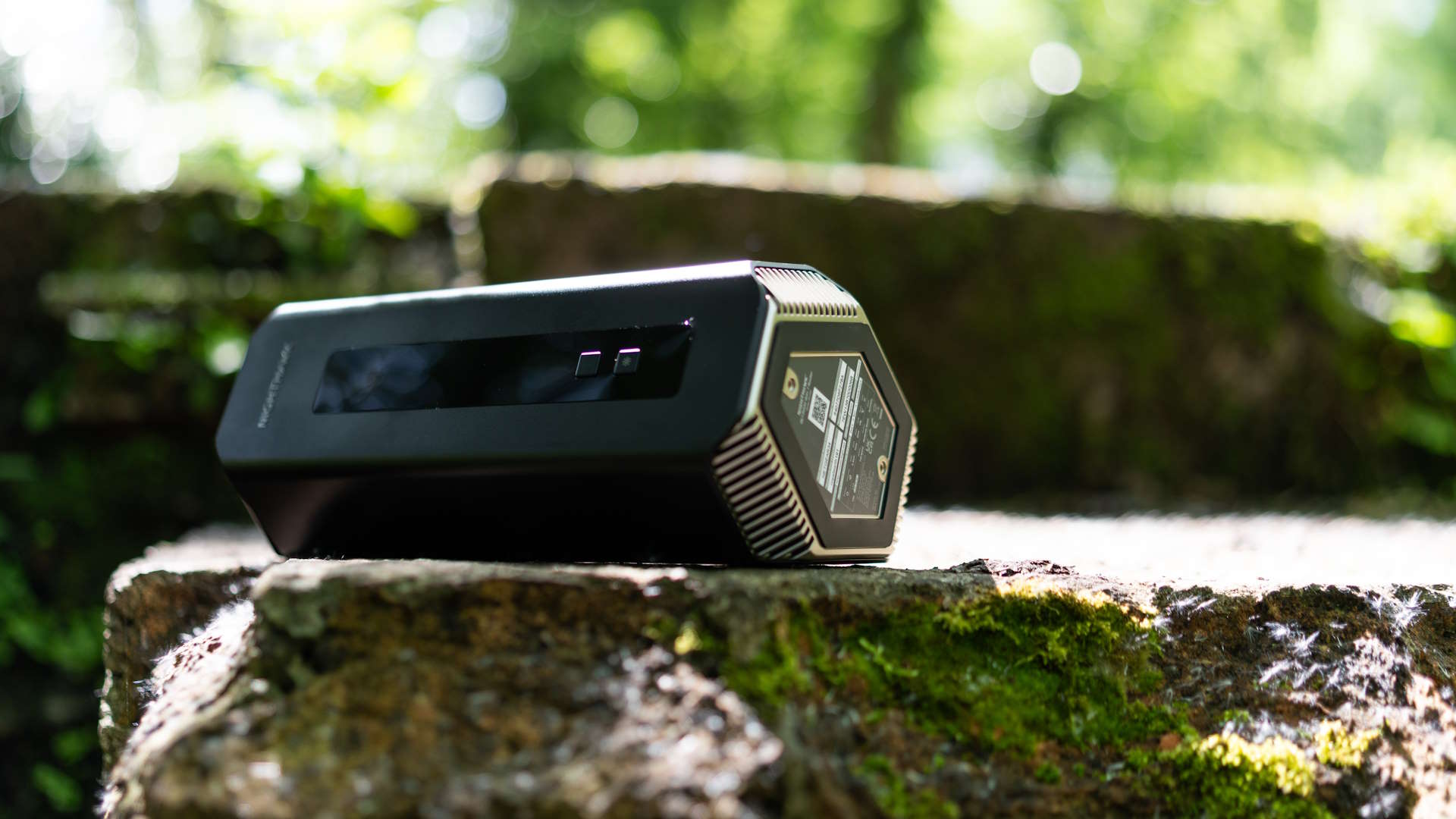Our Verdict
Netgear expects you to part with a lot of money for this Nighthawk, but for all that cash you're getting some cutting-edge networking tech, which might be more exciting than it sounds once you start connecting Wi-Fi 7 devices and streaming 4K at the bottom of the garden. It's not going to be for everyone, and will fit the needs of only a small proportion of internet users, but it's a window into the future of home Wi-Fi.
For
- Wi-Fi 7
- Huge throughput
- Future-proof
Against
- Expensive
- You'll need a new phone and laptop (this may be a positive)
- Over-specced for most people
PC Gamer's got your back
You can almost hear Also Sprach Zarathustra playing as you unbox the latest Nighthawk. It may be named after Lockheed's stealthy ground attack plane, but in the flesh it's all 2001's black monolith.
And just like Clark's creation the Netgear Nighthawk RS700S is here to uplift you. It brings with it unheard of technologies that will become the centre of your home for years to come. It shows us the way of the future and... calm down Ian, it's only a router.
The funny thing about Wi-Fi 7 kit, though, is just how advanced it seems over the Wi-Fi 5 and 6 gear we're all using (hint: not that much). Every new generation of wireless internettyness brings some innovations, but we're reaching the point of diminishing returns. With average UK and US homes being in the 1,000 to 2,000 sq ft range, why do you need a system that will cover 3,000 sq ft unless you live in a castle or want to share with your neighbours?
Obviously there are good reasons for wanting more coverage, such as the ability to email while gardening and wanting decent signal strength away from the site of the router and through walls. You could buy a Wi-Fi 6 mesh system for the same price as the RS700S, but you'd miss out on the Wi-Fi 7 features and the admiring glances from your network-savvy friends.
This latest release of the Wi-Fi standard, AKA IEEE 802.11be, offers twice the speed of v6 and is better at handling network congestion and keeping latency down. It offers a 6 GHz network with a blistering throughput of 11 Gbps, though distance and inconvenient walls will cut this down. What's perhaps more interesting is the 2.4 GHz channel, which offers 1.4 Gbps and has a much longer range, thanks to the ability of the lower frequencies to penetrate solid objects.
To take advantage of all this you'll need every device in the chain to be Wi-Fi 7 compliant, which means the right kind of extender, if you're using one, and a device like one of the latest Apple or Samsung Galaxy phones, HP, Lenovo, MSI laptops and desktop motherboards from Gigabyte and Asus, to mention just a few. Like all new wireless standards, Wi-Fi 7 is totally backward compatible, so for now a Wi-Fi 7 router is a hub to build around, with room for more devices in future as you upgrade and your needs grow.







The RS700S is a router you won't mind so much having on display. It's refined, a simple, shapely black tower with all the plugs squared away at the back. There are some vents, a few lights, but nothing that's going to prevent its positioning in a communal area of the house. All eight of its antennas are internal, so late-night trips to the fridge are unlikely to be disturbed by thoughts of Gregor Samsa, and there's a convenient button right on the front to turn off all the LEDs except the power light.
Around the back, there's an impressive array of Ethernet ports. The input is a 10-gig one, and this is what I mean about future-proofing. One glorious day, when all our homes have multi-gigabit fibre connections and we think nothing of quickly downloading a 500 GB game from Steam 2 onto a 500 TB SSD, then this router will still be a viable choice. There's a 10-gig output port too, which could be used to feed a hub in a complex network or a single data-hungry PC or server, along with four of the more common gigabit variety.
Setting up the RS700S is straightforward, with both basic web browser and QR-code-assisted smartphone app setup available. If you want to get deep into the settings, then the web page is the way to go, as it has access to more options than the app. If it's just parental controls and speed monitoring you want (plus administration of Netgear Armor security, for which there's a one-year trial included), the app is fine, but for those times only the Advanced tab will do, you'll need to dial in using a browser.
✅ You have god's own internet connection: Do you want to share it between a lot of devices? Or maybe you just like having the biggest numbers? We can respect that.
❌ You don't need it: There are a lot of routers on the market and most of them don't cost anything like as much as this one. If your needs are more modest, and your internet connection isn't capable of downloading the sum total of human knowledge in a few seconds, then this might be a tiny bit over-specced.
In my iPerf3 testing, however, which transfers a gigabyte of data over the wireless link and basically sees how fast it goes, the RS700S proved truculent. It's unwilling to offer up its Wi-Fi 7 goodies unless you use Smart Connect, which aggregates the three wireless networks into one and negotiates the best connection. Turn this off, and the laptop and smartphone I tried could only connect using Wi-Fi 6 at best, even on the 6 GHz network.
Still, with Smart Connect and Wi-Fi 7 enabled it transferred the data at a handy 704 Mbps with the client device close to the router (the laptop showed a link speed of as much as 3843 Mbps), and 204 Mbps when I put some distance, a floor, and some walls between the pair. Even on the long distance test it's comfortably faster than the Wi-Fi 6E Acer Predator Connect W6, and not that far off being twice as fast near the router itself.
It's basically impossible to trip up in general use, however, capable of serving 4K video streams (and 8K in the future), downloading from Steam at the full speed allowed by your internet connection, and transferring hundreds of files onto a network drive all at the same time to up to 200 devices. Like all Wi-Fi routers the speeds drop as you move further away, which is why you should run 50 feet of Cat7 Ethernet cable up your stairs, but this is an immensely powerful networking hub, and has the potential to remain that way for many years to come.
Netgear expects you to part with a lot of money for this Nighthawk, but for all that cash you're getting some cutting-edge networking tech, which might be more exciting than it sounds once you start connecting Wi-Fi 7 devices and streaming 4K at the bottom of the garden. It's not going to be for everyone, and will fit the needs of only a small proportion of internet users, but it's a window into the future of home Wi-Fi.

Ian Evenden has been doing this for far too long and should know better. The first issue of PC Gamer he read was probably issue 15, though it's a bit hazy, and there's nothing he doesn't know about tweaking interrupt requests for running Syndicate. He's worked for PC Format, Maximum PC, Edge, Creative Bloq, Gamesmaster, and anyone who'll have him. In his spare time he grows vegetables of prodigious size.



